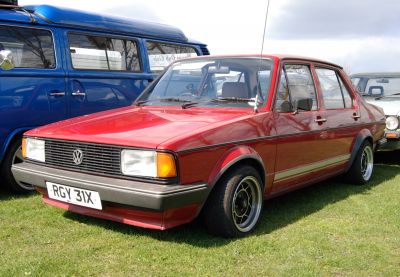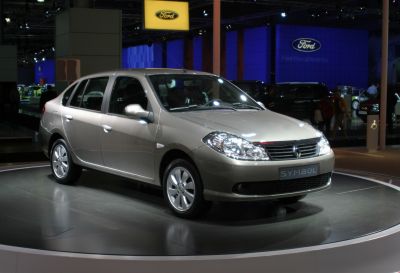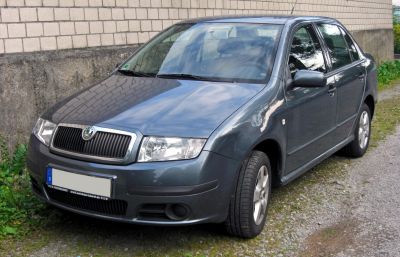 1982 Lancia Prisma (831 AB) Dimensions, Size & Specs
1982 Lancia Prisma (831 AB) Dimensions, Size & SpecsMeasurements of the 1982 Lancia Prisma, engineered for optimal performance and comfort
| Dimensions | |
|---|---|
| Length: | 4180 mm164.6 in13.7 ft |
| Width: | 1620 mm63.8 in5.3 ft |
| Height: | 1385 mm54.5 in4.5 ft |
| Trunk Capacity: | 450 liter15.9 cu ft |
| Weight Specifications | |
| Curb Weight: | 940-975 kg2072-2150 lbs |
| Maximal permitted Weight: | 1390-1425 kg3064-3142 lbs |
| Roof Load: | 50 kg110 lbs |
| Tire Specifications | |
| Rims Sizes: | 13-inch rims:
|
| Tire Sizes: |
|
The Lancia Prisma (831 AB) is a compact sedan produced by the Italian automaker Lancia between 1982 and 1992. Representing a robust offering in the early 1980s sedan segment, the Prisma combines practical dimensions with classic design and efficient performance. The vehicle measures 4180 mm (164.6 inches) in length, making it a comfortable fit for urban driving and parking while maintaining sufficient interior space. Its width stands at 1620 mm (63.8 inches), and the height is relatively low at 1385 mm (54.5 inches), contributing to its sleek sedan profile and aerodynamics. Weighing between 940 and 975 kilograms (2072 to 2149 pounds) curb weight, the Prisma offers a light and nimble drive. The maximum permissible weight ranges from 1390 to 1425 kg (3062 to 3140 pounds), allowing for passenger and cargo flexibility without compromising performance. Practicality is enhanced by a sizable luggage compartment of 450 liters (15.9 cubic feet), suitable for everyday needs and travel. The roof load capacity is rated at 50 kg (110 pounds), which supports additional storage options such as roof boxes or racks. Equipped with sturdy rim sizes of 5J x 13 and 5.5J x 14, paired with tire sizes 165/70 R13 and 165/65 R14, the Prisma balances ride comfort and handling. Overall, the Lancia Prisma (831 AB) is a well-rounded sedan that blends compact exterior dimensions with practical interior space, making it a notable example of 1980s Italian automotive engineering.
Discover the standout features that make the 1982 Lancia Prisma a leader in its class
Have a question? Please check our knowledgebase first.
The Lancia Prisma (831 AB), produced from 1982 to 1992, measures 4180 mm (164.6 inches) in length, 1620 mm (63.8 inches) in width, and 1385 mm (54.5 inches) in height. These dimensions place it firmly in the compact sedan category of its era, balancing maneuverability with interior space.
The Lancia Prisma has a curb weight ranging between 940 kg to 975 kg (2072 to 2149 lbs), depending on the trim and features. The maximum gross weight, which includes passengers, cargo, and vehicle weight, varies between 1390 kg to 1425 kg (3064 to 3141 lbs). This weight range is typical for compact sedans from the 1980s and early 1990s.
The Lancia Prisma offers a luggage capacity of 450 liters (15.9 cubic feet), which was competitive for sedans in its class during the 1980s and early 1990s. This ample trunk space allowed comfortable storage for daily use, shopping, and moderate travel needs, making it practical for small families or individual users.
With a length of 4180 mm (164.6 inches) and width of 1620 mm (63.8 inches), the Lancia Prisma fits comfortably inside a standard garage, which typically has internal dimensions of at least 2.4 meters (7 feet 10 inches) in width and 5.5 meters (18 feet) in length. Its moderate height of 1385 mm (54.5 inches) also poses no clearance issues for typical garage door heights.
The Lancia Prisma (831 AB) is basically a sedan version based on the Lancia Delta, its predecessor. While the Delta hatchback was slightly shorter in overall length, the Prisma extends to 4180 mm (164.6 inches) to offer a traditional sedan rear. Width and height remained similar to the Delta, with minor changes to improve aerodynamic and interior space efficiency. The sedan body of the Prisma optimized trunk space up to 450 liters, surpassing the hatchback’s cargo capacity, making it more versatile for families.
Compared to other compact sedans of the 1980s such as the Volkswagen Jetta Mk2 or the Ford Escort Mk3, the Lancia Prisma is slightly shorter in length but matches or slightly exceeds in width. While the Jetta measures about 4435 mm in length and 1690 mm in width, the Prisma’s 4180 mm length and 1620 mm width make it a more compact alternative, suitable for urban driving. Its luggage capacity of 450 liters was generally on par or larger than many competitors, giving it an edge in practicality.
The Lancia Prisma came equipped with rim sizes of 5J x 13 inches and 5.5J x 14 inches. Tire sizes commonly used were 165/70 R13 and 165/65 R14, reflecting the standard tire dimension norms of the era. These rim and tire combinations provided a balance between ride comfort and handling performance on typical road conditions.
The Lancia Prisma had a roof load capacity of 50 kg (110 lbs), which allows for the installation of roof racks suitable for carrying light cargo such as bicycles, skis, or small luggage boxes. This capacity should be observed carefully to avoid damaging the roof or compromising driving safety.
Despite its compact exterior measures, the Prisma was designed with interior spaciousness in mind. The sedan layout allowed for comfortable seating of four to five passengers with adequate legroom and headroom for its class. The design prioritized passenger ergonomics and practical utility, especially with a large boot volume of 450 liters, making the interior feel roomy and functional.
The Lancia Prisma’s sedan configuration provided a more traditional three-box design, which separated the cabin and trunk spaces distinctly. This design typically offers better noise insulation for passengers and more secure storage for luggage. Compared to the Lancia Delta hatchback, the Prisma’s sedan body offered increased trunk volume at 450 liters, improving its practicality for users needing sizeable cargo capacity without sacrificing passenger comfort.
Discover similar sized cars.

| Production: | 1979-1983 |
|---|---|
| Model Year: | 1979 |
| Length: | 4190 mm165.0 in |
| Width: | 1610-1630 mm63.4-64.2 in |
| Height: | 1395-1410 mm54.9-55.5 in |

| Production: | 2008-2012 |
|---|---|
| Model Year: | 2008 |
| Length: | 4261 mm167.8 in |
| Width: | 1640-1940 mm64.6-76.4 in |
| Height: | 1430-1439 mm56.3-56.7 in |

| Production: | 1983-1990 |
|---|---|
| Model Year: | 1984 |
| Length: | 4200 mm165.4 in |
| Width: | 1610 mm63.4 in |
| Height: | 1400 mm55.1 in |

| Production: | 2004-2007 |
|---|---|
| Model Year: | 2004 |
| Length: | 4232 mm166.6 in |
| Width: | 1893 mm74.5 in |
| Height: | 1449 mm57.0 in |
